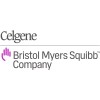A Phase I/II Study of ABI-007 (Abraxane®, Nab®-Paclitaxel)and Vinorelbine in Patients With Stage IV (Metastatic) Breast Cancer
Stage IV (Metastatic) Breast Cancer

About this trial
This is an interventional treatment trial for Stage IV (Metastatic) Breast Cancer focused on measuring Breast cancer
Eligibility Criteria
Inclusion Criteria: Patient has microscopically confirmed invasive breast carcinoma with clinical and/or radiographic evidence of stage 4 disease. If diagnosis is based on pleural effusion, positive cytology must be confirmed. Patient has had no prior chemotherapy for Stage 4 disease (hormone therapy is permitted). Prior adjuvant paclitaxel by 3-hour infusion is permitted, if there is no residual neuropathy. Prior adjuvant docetaxel on an every 3 week schedule is permitted. Disease must be measurable (unidimensional by Response Evaluation Criteria In Solid Tumors (RECIST) criteria) or evaluable (e.g., malignant effusion, marrow involvement). Elevated tumor markers alone are insufficient. Age >18. Southwest Oncology Group (SWOG)/Eastern Oncology Group (ECOG) performance status must be < or =2 at screen and on treatment day one. Life expectancy must be estimated at >16 weeks. Prior irradiation is permitted, provided: Does not exceed 25% of the estimated bone marrow volume Measurable/evaluable disease exists outside the radiation field, or progressive disease is documented within the radiation field. Informed consent must be obtained prior to registration. Patients must be > 2 weeks from prior surgery; > 3 weeks from radiation therapy to the pelvis, spine or long bones; > 3 weeks from prior chemotherapy (> 6 weeks for mitomycin C or nitrosureas), or > 2 weeks from prior hormonal therapy. All patients must have placement of appropriate central venous access device. Tumor HER2/neu expression must be determined prior to study enrollment. Assessment may be by fluorescence in situ hybridization (FISH) assay or by immunohistochemistry (ICC). If determination is intermediate by ICC, FISH must be performed. For enrollment purposes, this phase I study will not discriminate based on HER2 status. However, documentation of patients' HER2 status will be maintained and Herceptin will be prescribed for all HER2 positive patients. Exclusion Criteria: Granulocytes < 1,500/mm^3. Platelets < 100,000/mm^3. Hemoglobin < 9 gm/dl. Creatinine > 2.0 mg/dl. Total bilirubin > 2 mg/dl. Visceral crisis characterized by rapidly progressive hepatic or lymphangitic lung metastases. Medically unstable as judged by the patient's physician. Pregnancy or lactation; failure to employ adequate contraception. Uncontrolled central nervous system (CNS) disease. Pre-existing Grade ≥ 2 peripheral neuropathy except for abnormalities due to cancer. Psychological, familial, sociological or geographical conditions which do not permit weekly medical follow-up and compliance with the study protocol. Prior therapy with vinorelbine or prior therapy with a taxane that resulted in neuropathy.
Sites / Locations
- City of Hope Comprehensive Cancer Care Center
- Seattle Cancer Care Alliance
Arms of the Study
Arm 1
Arm 2
Arm 3
Experimental
Experimental
Experimental
Part 1: 80 mg ABI-007 + 15 mg vinorelbine
Part 2: 80 mg ABI-007 + 15 mg vinorelbine
Part 2: 90 mg ABI-007 + 20 mg vinorelbine
Weekly intravenous infusion of 80 mg/m^2 ABI-007, followed by an infusion of 15 mg/m^2 vinorelbine. Participants with human epidermal growth factor receptor 2-positive (HER2+) and who met cardiac safety requirements were also administered weekly Herceptin® (trastuzumab) following completion of ABI-007 and vinorelbine infusions. No G-CSF support was planned.
Weekly intravenous infusion of 80 mg/m^2 ABI-007, followed by an infusion of 15 mg/m^2 vinorelbine. Participants with human epidermal growth factor receptor 2-positive (HER2+) and who met cardiac safety requirements were also administered weekly Herceptin® (trastuzumab) following completion of ABI-007 and vinorelbine infusions. G-CSF support was given.
Weekly intravenous infusion of 90 mg/m^2 ABI-007, followed by an infusion of 20 mg/m^2 vinorelbine. Participants with human epidermal growth factor receptor 2-positive (HER2+) and who met cardiac safety requirements were also administered weekly Herceptin® (trastuzumab) following completion of ABI-007 and vinorelbine infusions. G-CSF support was given.
Outcomes
Primary Outcome Measures
Secondary Outcome Measures
Full Information
1. Study Identification
2. Study Status
3. Sponsor/Collaborators
4. Oversight
5. Study Description
6. Conditions and Keywords
7. Study Design
8. Arms, Groups, and Interventions
10. Eligibility
12. IPD Sharing Statement
Learn more about this trial
